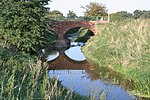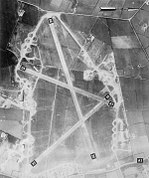St Michael's Church, Cotham
12th-century church buildings in EnglandChurch of England church buildings in NottinghamshireChurches preserved by the Churches Conservation TrustEnglish Gothic architecture in NottinghamshireGrade II* listed churches in Nottinghamshire ... and 1 more
Use British English from January 2021

St Michael's Church is a redundant Anglican church in the village of Cotham, Nottinghamshire, England. The building dates back to the 12th century.
Excerpt from the Wikipedia article St Michael's Church, Cotham (License: CC BY-SA 3.0, Authors, Images).St Michael's Church, Cotham
The Lane, Newark and Sherwood
Geographical coordinates (GPS) Address Nearby Places Show on map
Geographical coordinates (GPS)
| Latitude | Longitude |
|---|---|
| N 53.02 ° | E -0.8175 ° |
Address
The Lane
NG23 5JT Newark and Sherwood
England, United Kingdom
Open on Google Maps







